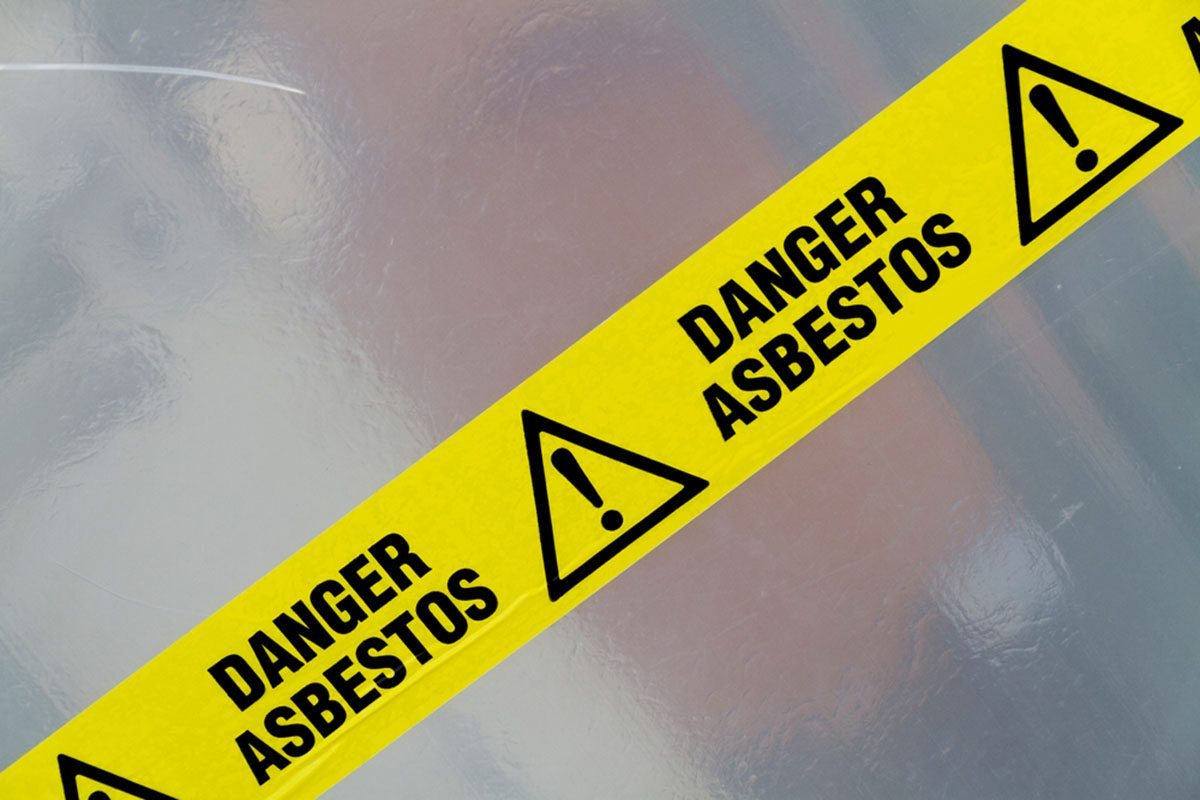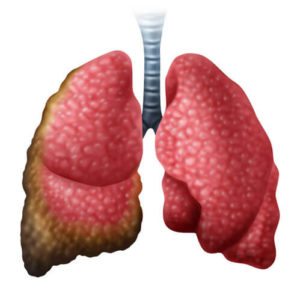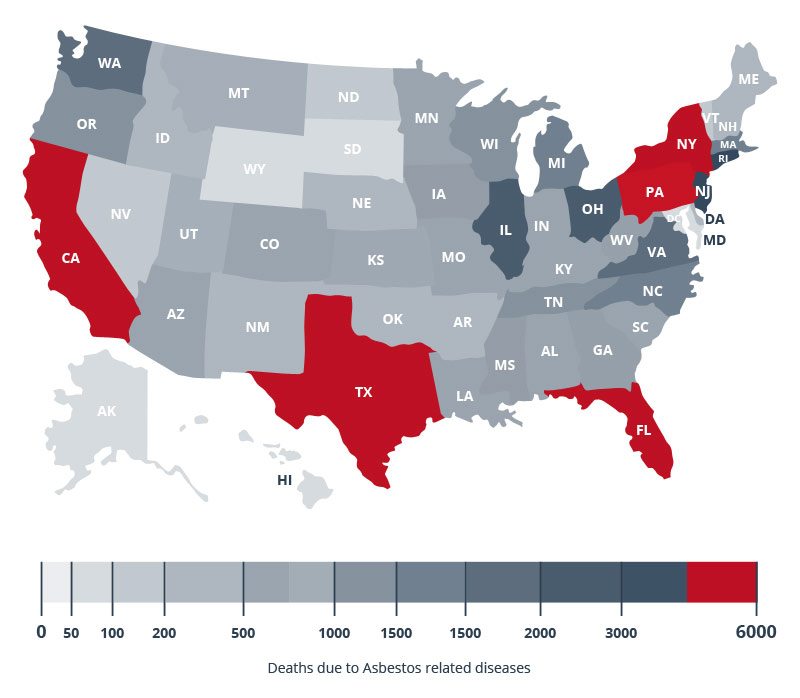Asbestos Diseases

 Asbestos is a known carcinogen that can cause a variety of health problems for those who have been exposed to it. Generally, asbestos-related diseases can take up to 60 years to develop, which means workers who were exposed decades ago may just now be experiencing symptoms.
Asbestos is a known carcinogen that can cause a variety of health problems for those who have been exposed to it. Generally, asbestos-related diseases can take up to 60 years to develop, which means workers who were exposed decades ago may just now be experiencing symptoms.
Asbestos companies can and should be held accountable for the harm they have caused everyday people who were never warned of the dangers of asbestos. If you have been diagnosed with an asbestos-related disease such as mesothelioma, contact us today to discuss what compensation may be available to you. Check out our FAQ’s for more details.
Identifying Asbestos-Related Diseases
Worldwide, about 125 million people work in environments that put them at risk for asbestos exposure. Asbestos-related disease statistics show that more than 90,000 people die each year when exposure to this dangerous material results in mesothelioma, lung cancer, or asbestosis.
The National Cancer Institute reports that millions of American workers have been exposed since the 1940s. Although the U.S. government has taken steps to protect workers, the asbestos companies have fought off a complete ban on their deadly products. So even today, workers continue to be exposed.
Because asbestos diseases take decades to develop, many people who were exposed years ago are just now being diagnosed with asbestos cancers and other illnesses. These diseases are generally caused by microscopic asbestos fibers that were inhaled or ingested in the past and got stuck in the body, irritating the tissue for many years before symptoms surfaced.
If you are experiencing any health problems that you suspect may be tied to past asbestos exposure, you need to discuss your work history or service history with your doctor. If you or a loved one has been diagnosed with an asbestos-related disease, you should also learn about your legal right to compensation.
Malignant Cancers
Asbestos is the only known cause of malignant mesothelioma, and it has been shown to cause lung cancer. Studies have also connected asbestos exposure to ovarian and laryngeal cancer. Further studies are being done to determine whether asbestos exposure can lead to gastrointestinal and colorectal cancers, throat cancers, kidney cancers, esophageal cancer, and gallbladder cancer.
Mesothelioma
Mesothelioma is a cancer that attacks the mesothelium tissue lining of the chest cavity, lungs, abdominal cavity, and many other organs in the body.
There are four types:
- Pleural mesothelioma (affecting the tissue surrounding the lungs)
- Peritoneal mesothelioma (affecting the tissue in the abdominal cavity)
- Pericardial mesothelioma (affecting the tissue surrounding the heart)
- Testicular mesothelioma
Mesothelioma can develop 15 to 60 years after a person was initially exposed to asbestos.
Symptoms of mesothelioma include shortness of breath, painful cough, pain in the chest or abdomen, fluid build-up in the chest or abdomen, lumps under the skin on the chest or in the abdomen, loss of appetite or weight loss, difficulty swallowing, fatigue, and fever.
Treatment options include surgery, chemotherapy, radiation, clinical trials, and holistic therapies. There is no cure yet for malignant mesothelioma, but your doctor will work with you to develop a treatment plan that best meets your needs.
Legal help is available for those who have been diagnosed with mesothelioma. Asbestos is the only known cause of this type of cancer. So asbestos companies that failed to warn workers of the dangers of their products can be held responsible for the harm they have caused. Contact us to discuss your options for compensation.
Lung Cancer
Lung cancer, sometimes called bronchogenic carcinoma, can be caused when asbestos fibers are inhaled and lodge in the lung itself, rather than in the tissue lining the lung. Asbestos can cause both small-cell lung cancer and non-small-cell lung cancer. Non-small-cell lung cancer accounts for the majority of cases and includes squamous cell carcinoma, adenocarcinoma, and large-cell carcinoma.
Symptoms of asbestos lung cancer include shortness of breath or wheezing, chronic cough, coughing up blood, hoarseness, difficulty swallowing, chest pain, swelling in the neck or face, loss of appetite or weight loss, and fatigue.
Treatment options include surgery, chemotherapy, radiation, targeted drug therapy, and clinical trials.
Legal help is available for people who are coping with an asbestos lung cancer diagnosis. To learn more about your options for pursuing compensation, contact us today.
Ovarian Cancer
The International Agency for Research on Cancer (IARC) in 2009 confirmed that occupational exposure to asbestos can cause ovarian cancer. Although studies on asbestos ovarian cancer are limited, researchers suspect that inhaled asbestos fibers may move through the abdominal cavity to penetrate the ovaries.
Symptoms of ovarian cancer include bloating, pelvic or abdominal pain, trouble eating or feeling full quickly, and urinary problems such as increased frequency or the urgency to go.
Treatment options include surgery, chemotherapy, hormone therapy, targeted therapy, radiation therapy, or a combination of options.
Legal help is available for women who were exposed to asbestos and developed cancer as a result. To discuss your options for pursing compensation for your illness, contact us now.
Laryngeal Cancer
Although smoking and heavy alcohol consumption are the most common causes of laryngeal cancer, asbestos exposure has also been associated with this type of cancer. Researchers have noted that the larynx, also known as the voice box, can be affected when asbestos fibers are inhaled. The fibers can accumulate in the larynx, causing chronic inflammation, disruption of airflow, and in some cases cancer.
Symptoms of laryngeal cancer include hoarseness, change in voice, chronic sore throat or cough, pain or trouble when swallowing, ear pain, trouble breathing, weight loss, and a lump or mass in the neck.
Treatment options include radiation therapy, surgery, chemotherapy, and clinical trials involving chemoprevention and radiosensitizers.
Legal help is available for people who have been diagnosed with cancer that was caused by asbestos. Contact us now to learn what types of compensation you may be entitled to.
Non-Cancerous Diseases
Exposure to asbestos can cause many diseases and serious health conditions beyond cancer. Symptoms of these asbestos-related diseases can range from mild to severe, and many people do not begin to experience problems until decades after their initial exposure. It is important to consult with your doctor at the first sign of any asbestos-related disease.
Asbestosis
Asbestosis is a chronic lung disease caused by asbestos fibers that stick in the alveoli, or small sacs in the lungs. Asbestosis is not a cancer, but it can have an extremely serious impact on a person’s ability to breath and quality of life. Asbestosis also increases a patient’s risk for developing asbestos lung cancer.
Asbestosis symptoms include shortness of breath, tightness or pain in the chest, chronic cough, loss of appetite, weight loss, and clubbed fingers and toes.
Treatment options include quitting smoking, oxygen tubes or mask, pulmonary rehabilitation exercises, a lung transplant, and hospitalization.
Legal help is available for people who have been diagnosed with asbestosis. Call or fill out our online form for more information on your compensation options.
Pleural Effusion
Pleural effusion, also referred to as a pulmonary effusion or water on the lungs, occurs when fluid builds up in the pleural space between the lungs and the chest cavity. A doctor can diagnose pleural effusion through a chest X-ray or CT scan, and a thoracentesis may be conducted to remove a sample of the fluid and test it.
Pleural effusion symptoms include chest pain, difficult or painful breathing, and coughing.
Treatment options include draining the pleural fluid, which may involve leaving a tube in the chest for continual drainage. Some pleural effusions may also require surgery or pleurodesis, which entails sealing the pleural space so fluid cannot continue to build up.
Pleural Plaques
Pleural plaques are the most common condition associated with asbestos. They are described as “smooth, white, raised, irregular lesions” on the pleura, or the tissue lining the lungs and the chest cavity. Although asbestos-related pleural plaques do not cause mesothelioma or asbestos lung cancer, they do indicate that a person is at risk for developing these diseases.
Pleural plaque symptoms are rare, although many patients experience anxiety when they are first diagnosed. However, most people do not even realize they have these lesions. For people who are experiencing symptoms such as difficulty breathing, coughing, or chest pain, notify a doctor immediately as these may be signs of a more serious asbestos-related disease.
Treatment options include quitting smoking and vigilant monitoring for other signs of asbestos-related diseases.
Pleurisy
Pleurisy, also known as pleuritis, occurs when the two layers of pleura tissue lining the outside of the lungs and the inside of the chest wall get inflamed. This tissue is normally smooth, allowing the lungs to expand and contract easily. When the tissue is inflamed by asbestos fibers, the two layers rub up against each other painfully any time a person takes a breath.
Pleurisy symptoms include sharp chest pain (which is worsened by breathing), shortness of breath, cough, and fever. Some people also experience pain in their shoulders or back.
Treatment options primarily focus on pain control and identifying the underlying cause of the condition, such as other asbestos-related diseases. Your doctor may perform blood tests, X-rays, a CT scan, an ultrasound, an electrocardiogram, and other diagnostic procedures to identify the cause of pleurisy.
Diffuse Pleural Thickening
Asbestos-related diffuse pleural thickening, also known as DPT, occurs when asbestos fibers lodge in the pleura lining the lungs and cause scarring that eventually thickens the tissue and interferes with breathing. Your doctor may use chest X-rays, CT scans, and PET scans when making a DPT diagnosis. He or she may also want to do a biopsy to rule out mesothelioma.
Diffuse pleural thickening symptoms include chronic chest pain and shortness of breath (dyspnea) on exertion. In rare cases, it can cause respiratory failure.
Treatment options are aimed at relieving the symptoms of DPT. Patients should stay active and quit smoking. Pulmonary rehabilitation (PR) may also be recommended. In rare cases, surgery may be done to remove the thickened pleura.
Rounded Atelactasis
Rounded atelectasis is an unusual type of lung collapse that is primarily caused by asbestos exposure. It occurs when the lung folds on itself near an area of pleural scarring or due to pleural effusion. Rounded atelectasis is also referred to as folded lung, Blesovsky syndrome, and atelectatic pseudotumor.
Rounded atelectasis symptoms may include cough, chest pain, and shortness of breath. However, most patients do not experience any signs of the condition, and symptoms are often attributed to an underlying disease such as asbestosis.
Treatment options for rounded atelectasis focus on the underlying condition. There is no treatment for rounded atelectasis itself.
COPD
Chronic obstructive pulmonary disease, commonly known as COPD, is a chronic lung disease often associated with smoking. It includes chronic bronchitis and emphysema. However, occupational exposure to dangerous materials such as asbestos can also cause COPD.
COPD symptoms include shortness of breath, chronic cough, wheezing, excess mucus, respiratory infections, fatigue, and a blue color in the lips or fingernails (known as cyanosis).
Treatment options include COPD medications, pulmonary rehabilitation, supplemental oxygen, lung surgery, clinical trials, and holistic practices such as yoga and acupuncture.
Pleural Fibrosis
Pleural fibrosis occurs when the pleura tissue lining the lung becomes scarred due to inhaled asbestos fibers. In severe cases, the thickened tissue can be so extensive that it causes a trapped lung.
Pleural fibrosis symptoms may include breathlessness or chest pain. However, some people may not experience any symptoms. Patients with pleural fibrosis may be diagnosed with other asbestos-related diseases, as well.
Treatment may include decortication, in which the scarred pleura tissue is surgically removed, allowing the patient to breathe easier.
Pulmonary Fibrosis
Pulmonary fibrosis occurs when the lung tissue is damaged or scarred, as can happen when asbestos fibers are inhaled and lodge in the lungs. This scarring, which makes the lung tissue thick and stiff, causes difficulty breathing and can lead to serious complications such as pulmonary hypertension, right-sided heart failure, respiratory failure, and other lung problems. Pulmonary fibrosis also increases a person’s risk for lung cancer.
Pulmonary fibrosis symptoms can be moderate and worsen slowly over time, or they can progress quickly, depending on the person. Symptoms include shortness of breath, cough, fatigue, weight loss, aching muscles and joints, and clubbing of the fingers or toes.
Treatment options may include medications to slow the progression of the disease, oxygen therapy to help with breathing, and pulmonary rehabilitation to help manage symptoms. For some people, a lung transplant may be an option.
Deaths Due to Asbestos Related Diseases in USA
In every region of the country, people from all walks of life are susceptible to developing mesothelioma from exposure to asbestos. The graphic below highlights areas where asbestos exposure was prevalent.

| Rank | State | Asbestosis | Mesothelioma | Total Deaths |
|---|---|---|---|---|
| U.S. Total | 19,758 | 23,965 to 40,411 | 43,073 to 59,519 | |
| 1 | California | 2,088 | 2,276 to 3,795 | 4,273 to 5,792 |
| 2 | Florida | 1,095 | 1,976 to 3,432 | 3,025 to 4,481 |
| 3 | New York | 750 | 1,912 to 3,374 | 2,626 to 4,088 |
| 4 | Pennsylvania | 1,728 | 1,348 to 2,215 | 3,046 to 3,913 |
| 5 | Texas | 1,343 | 1,349 to 2,325 | 2,651 to 3,627 |
| 6 | New Jersey | 1,783 | 1,045 to 1,775 | 2,775 to 3,505 |
| 7 | Illinois | 422 | 1,291 to 2,201 | 1,697 to 2,607 |
| 8 | Washington | 970 | 806 to 1,387 | 1,730 to 2,311 |
| 9 | Ohio | 578 | 1,046 to 1,745 | 1,609 to 2,308 |
| 10 | Virginia | 790 | 599 to 972 | 1,362 to 1,735 |
| 11 | Massachusetts | 759 | 613 to 973 | 1,355 to 1,715 |
| 12 | Michigan | 329 | 823 to 1,377 | 1,140 to 1,694 |
| 13 | North Carolina | 503 | 534 to 917 | 1,027 to 1,410 |
| 14 | Maryland | 633 | 453 to 747 | 1,074 to 1,368 |
| 15 | Oregon | 430 | 431 to 721 | 838 to 1,128 |
| 16 | Wisconsin | 177 | 548 to 914 | 716 to 1,082 |
| 17 | Tennessee | 229 | 447 to 786 | 671 to 1,010 |
| 18 | Minnesota | 238 | 439 to 713 | 668 to 942 |
| 19 | Alabama | 507 | 248 to 410 | 741 to 903 |
| 20 | Louisiana | 357 | 340 to 540 | 680 to 880 |
Sources & Author:
- American Cancer Society: Asbestos and Cancer Risk
http://www.cancer.org/cancer/cancercauses/othercarcinogens/intheworkplace/asbestos - American Cancer Society: Ovarian Cancer
http://www.cancer.org/cancer/ovariancancer/detailedguide/ovarian-cancer-signs-and-symptoms - American Family Physician: Asbestos-Related Lung Disease
https://www.ncbi.nlm.nih.gov/pubmed/17375514 - American Lung Association: Asbestosis
http://www.lung.org/lung-health-and-diseases/lung-disease-lookup/asbestosis/ - American Lung Association: COPD
http://www.lung.org/lung-health-and-diseases/lung-disease-lookup/copd/?referrer=https://www.google.com/ - Brazilian Journal of Medical and Biological Research: Identification of Rounded Atelectasis in Workers Exposed to Asbestos by Contrast Helical Computed Tomography
http://www.scielo.br/scielo.php?script=sci_arttext&pid=S0100-879X2003001000010 - British Lung Foundation: Asbestos-Related Conditions
https://www.blf.org.uk/support-for-you/asbestos-related-conditions - British Thoracic Society: Pleural Plaques
https://www.brit-thoracic.org.uk/document-library/clinical-information/mesothelioma/pleural-plaques-information-for-health-care-professionals/ - Cancer Epidemiology, Biomarkers & Prevention: Does Exposure to Asbestos Cause Ovarian Cancer? A Systematic Literature Review and Meta-Analysis
http://cebp.aacrjournals.org/content/20/7/1287 - Centers for Disease Control and Prevention: Respiratory Diseases
https://www.cdc.gov/niosh/programs/resp/risks.html - Cleveland Clinic: Occupational Lung Disease
http://www.clevelandclinicmeded.com/medicalpubs/diseasemanagement/pulmonary/occupational-lung-disease/ - Clinical Pulmonary Medicine: Rounded Atelectasis
http://journals.lww.com/clinpulm/fulltext/2002/01000/rounded_atelectasis.12.aspx - Environmental Health Perspectives: Occupational Exposure to Asbestos and Ovarian Cancer
https://www.ncbi.nlm.nih.gov/pmc/articles/PMC3230399/ - Institute of Medicine (US) Committee on Asbestos: Laryngeal Cancer and Asbestos
- Journal of Occupational Medicine and Toxicology: Clinical Consequences of Asbestos-Related Diffuse Pleural Thickening
https://www.ncbi.nlm.nih.gov/pmc/articles/PMC2553409/ - Mayo Clinic: Asbestosis
http://www.mayoclinic.org/diseases-conditions/asbestosis/home/ovc-20215358 - Mayo Clinic: Lung Cancer
http://www.mayoclinic.org/diseases-conditions/lung-cancer/basics/causes/con-20025531 - Mayo Clinic: Pleurisy
http://www.mayoclinic.org/home/ovc-20264974 - Mayo Clinic: Pulmonary Fibrosis
http://www.mayoclinic.org/diseases-conditions/pulmonary-fibrosis/symptoms-causes/dxc-20211754 - MedicineNet.com: Pleural Effusion (Fluid in the Chest or on the Lung)
- National Cancer Institute: Asbestos Exposure and Cancer Risk
https://www.cancer.gov/about-cancer/causes-prevention/risk/substances/asbestos/asbestos-fact-sheet - National Cancer Institute: Laryngeal Cancer Treatment
https://www.cancer.gov/types/head-and-neck/patient/laryngeal-treatment-pdq#section/_55 - Polish Journal of Radiology: Rounded Atelectasis of the Lung
https://www.ncbi.nlm.nih.gov/pmc/articles/PMC4102604/ - Respirology: Causes and Management of Pleural Fibrosis
https://www.ncbi.nlm.nih.gov/pubmed/15612954
